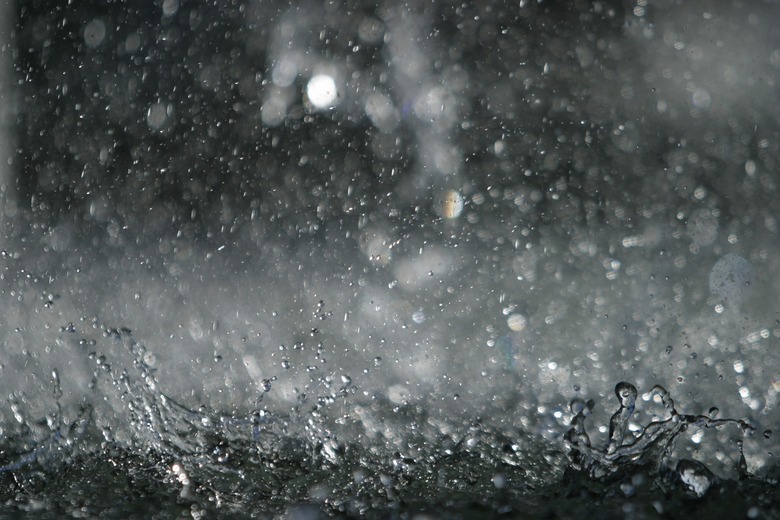How Does Acid Rain Enter The Water Cycle?
According to the Environmental Protection Agency, "acid rain" refers to wet and dry depositions on earth containing higher than normal amounts of toxic gases. The water cycle involves the circulation of water on, above and below the surface of the earth. Acid rain enters the water cycle through both wet and dry depositions.
Description
Description
Water from the earth's surface evaporates into the atmosphere, where it condenses and precipitates as rain, snow, mist or water vapor and thus returns to the surface of the earth. As a result of air pollution from burning of fossil fuels, there is increased presence of nitrous oxide and sulfuric dioxide in the atmosphere. Water bodies absorb these gases in different steps of the water cycle, such as evaporation, precipitation and condensation.
Evaporation
Evaporation
Smoke caused by burning of fossil fuels mix with the water vapor (formed from water while evaporating from sea, rivers or lakes) and get into the cloud. This causes acid rain.
Precipitation
Precipitation
Clouds containing water vapor that have sulfuric or nitrous oxide cause acid rain on earth while precipitating. This acid rain can adversely affect plants, paint, buildings and rocks.
Condensation
Condensation
Water vapor that remains in the atmosphere returns to earth as water droplets by the condensation process. Sulfates and nitrates absorbed by water vapor can return to the water cycle through this process.
Deposition
Deposition
This is a process in which the smoke particles stick to buildings, homes, cars, and trees through dry deposition. These deposited particles get washed from these surfaces by rain and eventually get back in the water cycle.
Cite This Article
MLA
Sen, Debashree. "How Does Acid Rain Enter The Water Cycle?" sciencing.com, https://www.sciencing.com/facts-5798619-acid-rain-enter-water-cycle-/. 9 January 2018.
APA
Sen, Debashree. (2018, January 9). How Does Acid Rain Enter The Water Cycle?. sciencing.com. Retrieved from https://www.sciencing.com/facts-5798619-acid-rain-enter-water-cycle-/
Chicago
Sen, Debashree. How Does Acid Rain Enter The Water Cycle? last modified August 30, 2022. https://www.sciencing.com/facts-5798619-acid-rain-enter-water-cycle-/
